The 1160s was a decade of the Julian Calendar which began on January 1, 1160, and ended on December 31, 1169.

Year 1135 (MCXXXV) was a common year starting on Tuesday of the Julian calendar.
The 1090s was a decade of the Julian Calendar which began on January 1, 1090, and ended on December 31, 1099.
The 1100s was a decade of the Julian Calendar which began on January 1, 1100, and ended on December 31, 1109.
The 1140s was a decade of the Julian Calendar which began on January 1, 1140, and ended on December 31, 1149.

Year 1147 (MCXLVII) was a common year starting on Wednesday of the Julian calendar.
The 1110s was a decade of the Julian Calendar which began on January 1, 1110, and ended on December 31, 1119.
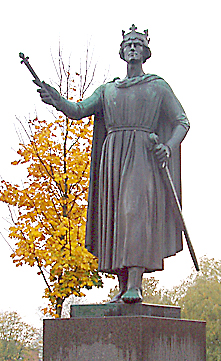
Year 1168 (MCLXVIII) was a leap year starting on Monday of the Julian calendar.

Year 1176 (MCLXXVI) was a leap year starting on Thursday of the Julian calendar, the 1176th year of the Common Era (CE) and Anno Domini (AD) designations, the 176th year of the 2nd millennium, the 76th year of 12th century, and the 7th year of the 1170s decade.

Year 1169 (MCLXIX) was a common year starting on Wednesday of the Julian calendar.

Year 1137 (MCXXXVII) was a common year starting on Friday of the Julian calendar.
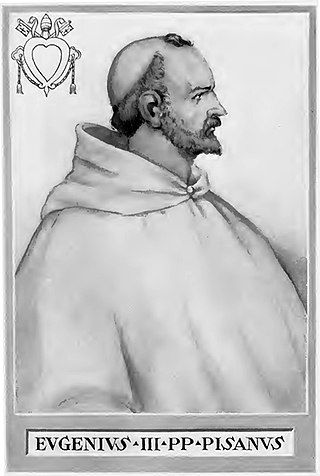
Year 1145 (MCXLV) was a common year starting on Monday of the Julian calendar.
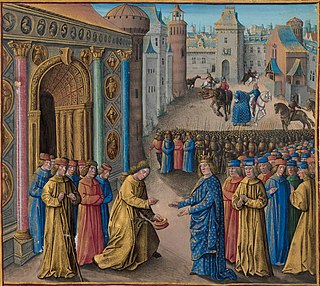
Year 1148 (MCXLVIII) was a leap year starting on Thursday of the Julian calendar.
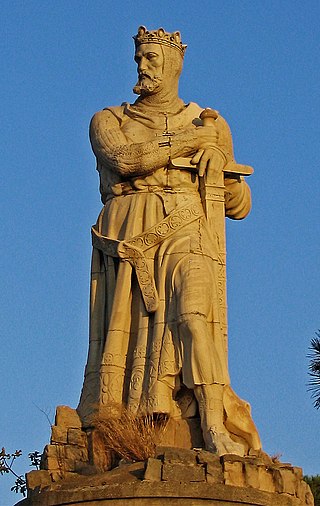
Year 1104 (MCIV) was a leap year starting on Friday of the Julian calendar.

Year 1105 (MCV) was a common year starting on Sunday of the Julian calendar.

Nūr al-Dīn Maḥmūd Zengī, commonly known as Nur ad-Din, was a member of the Zengid dynasty, who ruled the Syrian province of the Seljuk Empire. He reigned from 1146 to 1174. He is regarded as an important figure of the Second Crusade.

Bohemond III of Antioch, also known as Bohemond the Child or the Stammerer, was Prince of Antioch from 1163 to 1201. He was the elder son of Constance of Antioch and her first husband, Raymond of Poitiers. Bohemond ascended to the throne after the Antiochene noblemen dethroned his mother with the assistance of the lord of Armenian Cilicia, Thoros II. He fell into captivity in the Battle of Harim in 1164, but the victorious Nur ad-Din, atabeg of Aleppo released him to avoid coming into conflict with the Byzantine Empire. Bohemond went to Constantinople to pay homage to Manuel I Komnenos, who persuaded him to install a Greek Orthodox patriarch in Antioch. The Latin patriarch of Antioch, Aimery of Limoges, placed Antioch under interdict. Bohemond restored Aimery only after the Greek patriarch died during an earthquake in 1170.
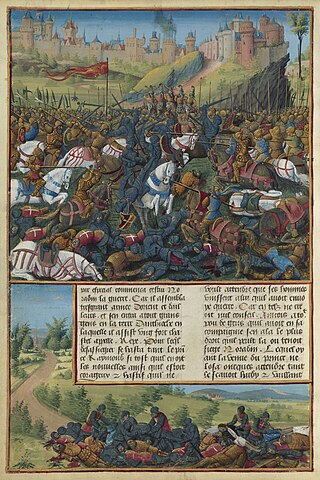
The Battle of Inab, also called Battle of Ard al-Hâtim or Fons Muratus, was fought on 29 June 1149, during the Second Crusade. The Zengid army of Atabeg Nur ad-Din Zangi destroyed the combined army of Prince Raymond of Poitiers and the Assassins of Ali ibn-Wafa. The Principality of Antioch was subsequently pillaged and reduced in size as its eastern border was pushed west.

The Battle of Harim (Harenc) was fought on 12 August 1164 at Harim, Syria, between the forces of Nur ad-Din, and a combined army from the County of Tripoli, the Principality of Antioch, the Byzantine Empire, and Armenia. Nur ad-Din won a crushing victory, capturing most of the leaders of the opposing army.

Harem or Harim, is a Syrian city within the Idlib Governorate. It has an altitude of 160 meters and a population of 21,934. Harem is situated on the border with Turkey, 55 km west of Aleppo.















